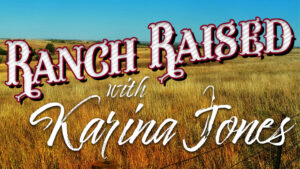

From Washington with Karina Jones is brought to you by BillionAuto.com one of the nation’s largest automotive websites!
Karina Jones is a real-life ranch wife in the Nebraska Sandhills, former Field Director for R-CalfUSA and one of the most highly sought-after speakers in the cattle industry nationwide!
Hello everyone in farm and ranch country. We have some very big reports from the USDA in the last 30 days that put the domestic livestock industry under a microscope as a strong downward trend continues and leaves some asking, “what’s next?”
The USDA annual sheep and goat inventory report only comes out once a year, in January. I can’t say anyone in sheep country is too surprised at the news of this year’s report. Imports of lamb and goat meat have all but replaced our domestic inventory leaving sheep producers especially frustrated and asking Congress in 2023 for trade protection.
All sheep and lambs inventory in the United States on January 1, 2024 totaled 5.03 million head, down 2 percent from 2023. Breeding sheep inventory at 3.67 million head on January 1, 2024, decreased 2 percent from 3.74 million head the previous year. Last years lamb crop of 3.03 million head was down 2 percent from 2022.
All goats and kids inventory in the United States on January 1, 2024 totaled 2.47 million head, down 2 percent from 2023. Breeding goat inventory totaled 2.03 million head, down 2 percent from 2023. Market goats and kids totaled 438,700 head, down 4 percent from a year ago. Kid crop for 2023 totaled 1.52 million head for all goats, down 2 percent from 2022.
The sheep and goat industry is in good company, if you can call it that. Maybe we should just say, they have company. The bi-annual cattle inventory report comes out in January and July. The news of the continued contraction of the US cattle industry is hot off the press.
First, an inventory of 87.2 million is the smallest cattle inventory number going back to 1951. Of that Beef cows, at 28.2 million head, were down 2% from a year ago. Beef replacement heifers, at 4.86 million head, were down 1% from a year ago.
The 2023 calf crop, at 33.593 million, is the smallest calf crop on record. Calf inventory under 500 pounds, at 13.284 million (97%), was smaller than expected. Beef replacement heifers, at 99% (4.858 million) was smaller than expected.
There is no heifer retention or desire to rebuild the herd insight. The most predictable theory to pin it on is shifting drought areas. But I think there are more characters in the story. An aging producer population doesn’t have many excited about calving heifers. A backlog of debt on the books has many operations looking to clean up the liability side of the balance sheet while market conditions are offering some favors. Increasing imports of live cattle, beef, lamb, and mutton has all livestock industries having to compete in our domestic market against cheaper produced foreign products with no trade protection from our own country. And something that I feel is not talked about near but a true villain among the cast of characters is these interest rates. While interest rates have stabilized recently, they don’t seem to be coming down. Expansion in any operation has been stifled by the cost of being able to do it.
There will be a lot to watch and keep rural America on her toes in 2024!
Have you checked out the Your Ag Network app or website? When you need up to date markets and ag news, it is your one stop shop with a full menu of ag information.

Karina ranches with her husband, Marty, and 4 children near Broken Bow, NE. She grew up in western NE, with roots also in southwest SD. The cattle industry and raising kids is her passion.
Tune in Fridays on The Hot Barn Report, where she deep dives into cattle industry issues and highlights industry reforms or listen to Ranch Raised with Karina Jones a slice of daily life on the Jones Ranch.







